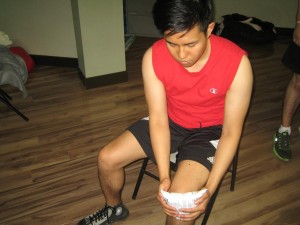It is a known fact that runners, jumpers and other athletes put substantial stress on the knees. Runner’s knee basically refers to certain medical conditions that cause pain around the front aspect of the knee. It includes conditions such as patellofemoral misalignment, knee pain syndrome and chrondomalacia patella.

Causes of Runner’s knee
As a complex structure, the knee is also sensitive. Certain factors can contribute to the condition such as injuries, misalignment of the kneecap, partial or complete dislocation, flat feet, tightness or weakness of the thigh muscles. The pain might be due to the irritation of the soft tissues around the front part of the knee. The tendons that are strained usually occur among athletes. Other factors include imbalance of the muscles, overuse and lack of stretching. Pain that starts in a different body part such as the hip or back can cause pain in the knee. In some cases, the kneecap is misaligned. In doing so, vigorous activities can lead to stress as well as wear on the cartilage of the kneecap. It can often lead to the softening and breakdown of the cartilage on the patella, resulting to pain in the underlying bone and the irritation of the joint lining.
Symptoms of Runner’s knee
- Aching, dull pain around or under the front part of the kneecap where it connects to the inferior end of the femur
- Pain when kneeling, walking up or down stairs, sitting and squatting
How to treat Runner’s knee
The treatment usually depends on the cause of the knee pain and surgical intervention is not required. For the appropriate first aid care, instruct the individual to stop the activity that causes the pain, such as jumping or running activities and the RICE method should be applied.
- Rest – instruct the individual to avoid any weight on the affected knee.
- Ice – apply ice wrapped in towel or cold packs for short periods several times in a day.
- Compression – an elastic bandage is used such as a knee sleeve with the kneecap cut out so that it perfectly fits without aggravating the pain.
- Elevation – the knee should be raised higher than the level of the heart.
Non-steroidal anti-inflammatory drugs can be administered to minimize the pain. In case the knee pain worsens, it is best to consult a doctor for evaluation. Always remember that Runner’s knee typically heals on its own as long as early treatment and reconditioning is provided.

